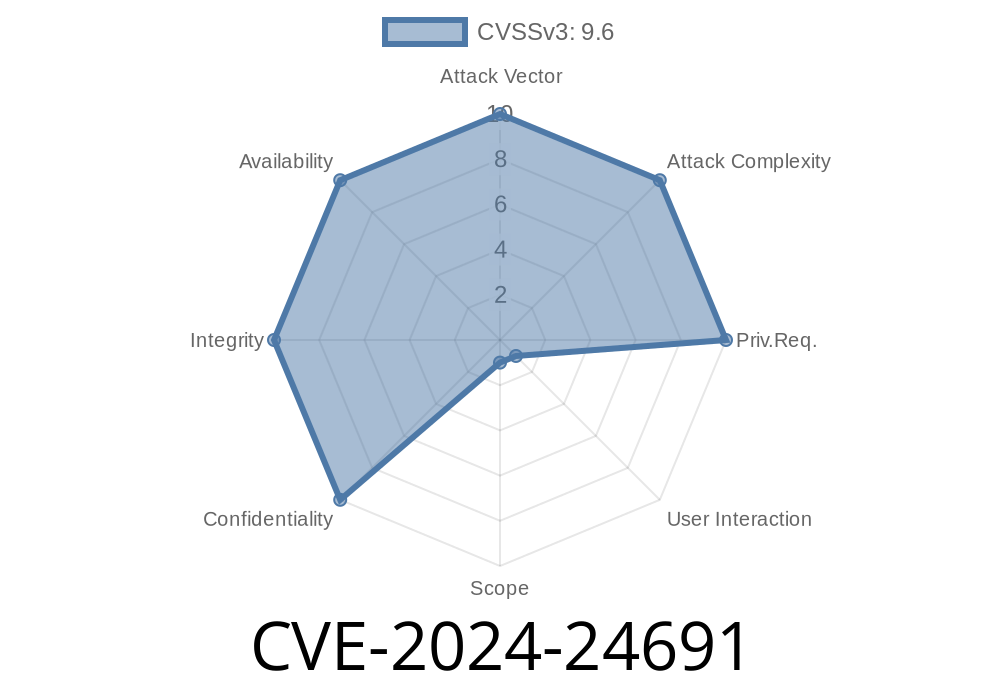In the booming age of remote work and online meetings, Zoom has become an indispensable tool for millions across the globe. However, every digital platform comes with its own set of vulnerabilities. In this article, we'll explore CVE-2024-24691 – a vulnerability within Zoom Desktop Client for Windows, Zoom VDI Client for Windows, and Zoom Meeting SDK for Windows. This vulnerability may allow an unauthenticated user to conduct an escalation of privilege via network access.
Before diving into the details of this vulnerability, let's take a brief look at improper input validation and the concept of "escalation of privilege."
Improper Input Validation
Input validation is a critical process that checks and validates user input data on web applications, ensuring only clean and safe data is processed by the application. Improper input validation, however, occurs when an application does not adequately validate user input, potentially leading to security vulnerabilities.
Escalation of Privilege
Escalation of privilege (EoP) refers to the situation in which a user with limited access privileges gains additional (often unauthorized) access, functions, or permissions within an application or system.
With an understanding of the concepts involved in this vulnerability, let's delve into the specifics of CVE-2024-24691.
CVE-2024-24691 Exploit Details
According to the findings published by the original researchers at CVE, the improper input validation vulnerability within Zoom Desktop Client, Zoom VDI Client, and Zoom Meeting SDK for Windows may allow an unauthenticated user to escalate their privileges via network access.
To better understand this vulnerability's implications, let's take a look at a code-snippet example
# Sample Code for Exploiting CVE-2024-24691 Vulnerability
def perform_privilege_escalation(user_input):
if validate_user_input(user_input):
# Normal processing here
else:
# Instead of stopping, the application processes the user input anyway
def validate_user_input(user_input):
# ...
# In this example, some checks are missing or inadequately performed
# ...
return is_input_valid
In this example, the perform_privilege_escalation() function processes user data even if the validation function (validate_user_input()) is unable to verify the input's cleanliness and safety. This oversight paves the way for attackers to exploit systems by simply sending crafted malicious inputs that bypass validation measures.
In a real-world scenario, attackers exploiting this vulnerability might gain unauthorized access to essential features and perform actions that are usually reserved for higher privilege roles, compromising the platform's security and integrity.
Research
Several cybersecurity researchers have acknowledged this vulnerability and published their findings on various platforms. A few such primary sources include:
1. CVE: The primary source of information on this vulnerability, where researchers have disclosed the affected versions and their implications.
2. Zoom: Official security advisory from Zoom, providing recommendation and acknowledgment for this vulnerability.
Mitigation and Recommendations
Users are urged to review the official Zoom advisory and update to the respective patched version of the software:
Zoom Meeting SDK for Windows (5.8.7 or later)
Developers should also properly implement input validation for any applications they create, ensuring the security of user interactions and data processing.
Conclusion
With the ever-growing reliance on digital communication tools like Zoom, it's crucial to stay vigilant about potential vulnerabilities like CVE-2024-24691. Updating software regularly, learning about common security vulnerabilities, and following best-practices in software development can help reduce the likelihood of such issues arising. Stay safe, and happy Zooming!
Timeline
Published on: 02/14/2024 00:15:47 UTC
Last modified on: 02/14/2024 13:59:35 UTC
